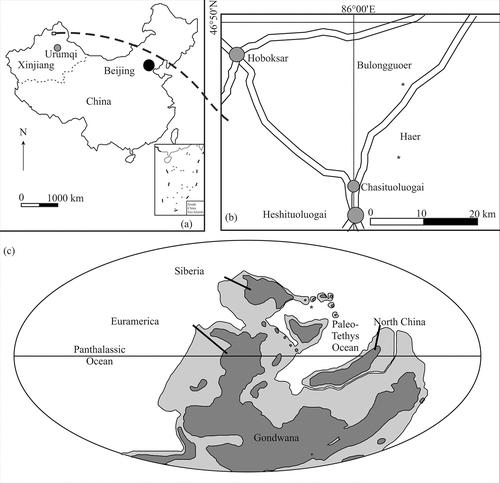当前位置:
X-MOL 学术
›
Acta Geol. Sinica Engl. Ed.
›
论文详情
Our official English website, www.x-mol.net, welcomes your feedback! (Note: you will need to create a separate account there.)
Environment and Age of the Upper Devonian–Carboniferous Zhulumute and Hongguleleng Formations, Junggar Basin, NW China: Ichnological and Palynological Aspects
Acta Geologica Sinica-English Edition ( IF 3.3 ) Pub Date : 2020-02-06 , DOI: 10.1111/1755-6724.14408 Michał STACHACZ 1 , Marcelina KONDAS 2 , Paweł FILIPIAK 2 , Xueping MA 3
Acta Geologica Sinica-English Edition ( IF 3.3 ) Pub Date : 2020-02-06 , DOI: 10.1111/1755-6724.14408 Michał STACHACZ 1 , Marcelina KONDAS 2 , Paweł FILIPIAK 2 , Xueping MA 3
Affiliation

|
Two Upper Devonian to Lower Carboniferous sections, namely the Bulongguoer and Haer (Gennaren area) in the Junggar Basin, Central Asian Orogenic Belt, in northwestern China were examined with regard to ichnology and palynology. The deposits of the Hongguleleng Formation and Namu Member of the Heishantou Formation, respectively, are mostly unbioturbated or poorly bioturbated, with poorly diversified trace fossils, which indicate unfavourable conditions for the burrowing benthic community during the Late Devonian and Early Carboniferous. The main factor governing the growth of the bioturbating population was the rapid sedimentation of fine-grained, volcanic material documented as tempestites, which buried the benthic fauna. In the Bulongguoer section, the presence of miospores Teichertospora torquata and Grandispora gracilis enabled identification of the broad Teichertospora torquata-Grandispora gracilis Miospore Zone from the transitional Frasnian/Famennian interval. More accurate identification of palynostratigraphical levels (DE and CZ Miospore zones) is only tentative. On the basis of palynofacies analysis, samples from the lower Bulongguoer section indicate deposition in more proximal conditions, whereas samples from the top of the section indicate deposition in a more distal environment. In the Haer section, only a general biostratigraphic indication for the Tournaisian was possible, owing to poor preservation of organic matter.
更新日期:2020-02-06



























 京公网安备 11010802027423号
京公网安备 11010802027423号